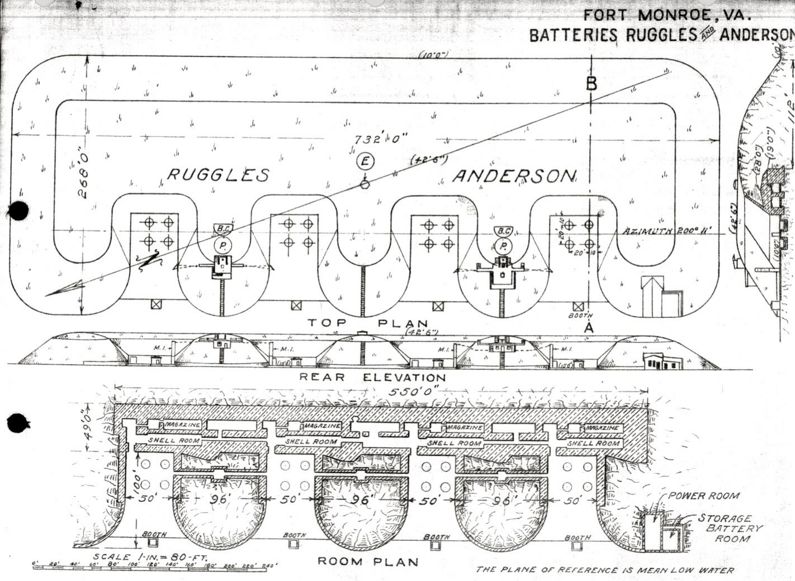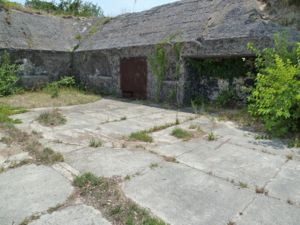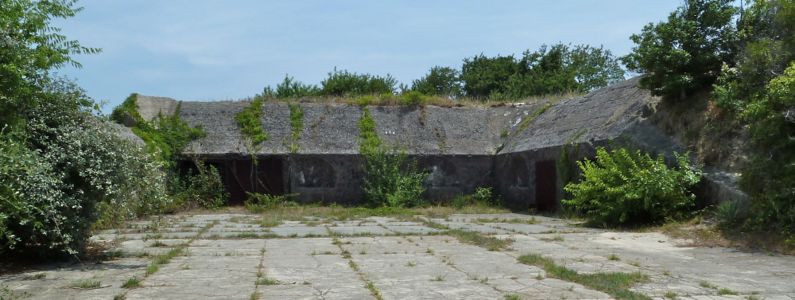Battery Anderson
|
Battery Anderson (1898-1942) - Battery Anderson was a reinforced concrete, Endicott Period 12 inch coastal mortar battery on Fort Monroe, Virginia. The battery was named in G.O. 105, 9 Oct 1902 after BG Robert Anderson, U.S. Army, who commanded Fort Sumter in the defense of Charleston, South Carolina, during the U.S. Civil War, and who died 26 Oct 1871, at Nice, France. In 1906 mortar pits C and D were re-designated Battery Ruggles which was named in G.O. 20, 25 Jan 1906, in honor of BG George D. Ruggles, Adjutant General, U.S. Army, who served with distinction during the U.S. Civil War and who died 19 Oct 1904. Mortar pits A and B retained the Anderson designation. Battery construction started on 2 Apr 1896, was completed in November 1898 and transferred to the Coast Artillery for use on 3 Dec 1898 at a cost of $ 48,670.06. Deactivated in 1943.
Endicott PeriodPart of the Harbor Defense of Chesapeake Bay. Originally built as an Endicott Period concrete coastal mortar battery with sixteen 12" M1890MI mortars mounted on M1896MI mortar carriages. Battery Anderson was initially configured with four mortar pits (A,B,C and D), each containing four 12" M1890MI mortars. In 1906 the battery was administratively divided into two batteries, each with two mortar pits (A and B). The new battery, formed from the C and D mortar pits of Battery Anderson, became Battery Ruggles. These mortar batteries were single story batteries with the gun emplacements located on the same level as the magazines. Shells and powder bags were stored in earth covered magazines adjacent to the mortar emplacements and were brought to the magazine doors by an overhead rail system. Carts then moved the shells and powder bags to the mortar loading platform. The servicing of all four mortars in a pit for salvo firing required a large number of men and munitions and made the operation dangerous and inefficient. A program to reduce the number of mortars in a pit by two was put in place and most of the Endicott Period mortar batteries were reconfigured for two mortars in each pit. Firing of the mortars was controlled by a data booth at the rear of each mortar pit, azimuth and elevation information were written on slate boards visible to the gun crews.

World War IThe U.S. entry into World War I resulted in a widespread removal of large caliber coastal defense gun tubes for service in Europe. Many of the gun and mortar tubes removed were sent to arsenals for modification and mounting on mobile carriages, both wheeled and railroad. Most of the removed gun tubes never made it to Europe and were either remounted or remained at the arsenals until needed elsewhere. The mortars of Battery Anderson-Battery Ruggles were impacted by the World War I redistribution but other factors contributed to the loss of eight of the sixteen mortars from the two batteries in 1917-1918. There was already a program in place to reduce the number of 12" mortars in each seacoast mortar pit to only two. This program was designed to reduce the number of men required to service the mortars and to improve efficiency by reducing crowding in the pit during salvos. In late 1917 and early 1918 Fort Monroe was ordered to dismount and prepare eight mortars for use abroad. Five of the dismounted mortars actually made it to France and the three others were shipped to storage. The end result was that each mortar pit contained two mortars. World War IIThe battery was declared obsolete on 29 Dec 1942 and the guns and carriages were ordered scrapped shortly after that. Current StatusNo period guns or mounts in place. Only mortar pit D of Battery Anderson (pit B of Battery Ruggles) is open to public access, all of the other pits are behind a barbwire fence.
Sources: Links: Visited: 22 Jul 2010
| ||||||||||||||||||||||||||||||||||||||||||||||||||||||||||||||||||||||||||||||||||||||||||||||||||||||||||||||||||||||||||||||||||||||||||||||||||||||||||||||||||||||||||||||||||||||||||||||||||||||||||||||||||||||||||||||||||


